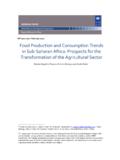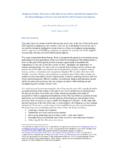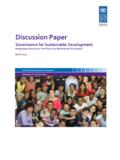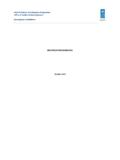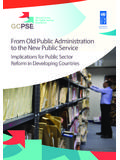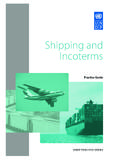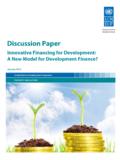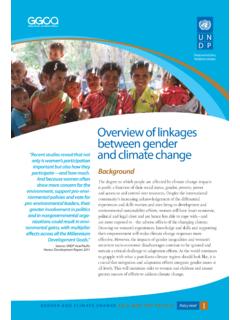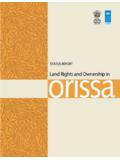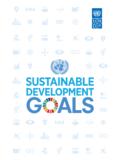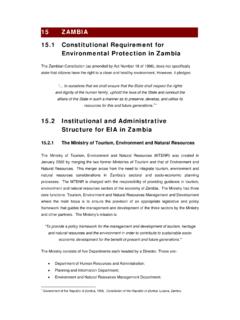Transcription of REPUBLIC OF NAMIBIA MINISTRY OF …
1 REPUBLIC OF NAMIBIA . MINISTRY OF environment . AND TOURISM. Empowered lives. Resilient nations. NATIONALLY APPROPRIATE. MITIGATION ACTION: RURAL DEVELOPMENT IN NAMIBIA . THROUGH ELECTRIFICATION WITH RENEWABLE ENERGIES. United Nations Development Programme REPUBLIC OF NAMIBIA . MINISTRY OF environment Empowered lives. AND TOURISM Resilient nations. UNDP partners with people at all levels of society to help build nations that can withstand crisis, and drive and sustain the kind of growth that improves the quality of life for everyone. On the ground in 177 countries and territories, we offer global perspectives and local insight to help empower lives and build resilient nations. UNDP MDG Carbon is an innovative programme that assists developing countries in implementing a host of lowcarbon interventions, spanning multiple technologies, active in all regions of the world, and leveraging significant amounts in private-sector millions of dollars in independent co-investments.
2 The NAMA is made possible due the generous contribution provided by AusAID. Technical Oversight and Guidance Alexandra Soezer, Project Manager, UNDP MDG Carbon Lead Authors Manfred Stockmayer, Energy Changes, Laura Martonova, Energy Changes and Wolfgang Wetzer, Energy Changes Co-author Zivayi Chiguvare, NAMIBIA Energy Institute Contributor Courtney Blodgett, Independent Climate Change Consultant Reviewers MINISTRY of environment and Tourism, MINISTRY of Mines and Energy, NAMIBIA Energy Institute, National Planning Commission, ELECTRICITY Control Board, Environmental Investment Fund, City of Windhoek, Windhoek City Council, NamPower - Renewable Energy, Electricity Control Board, Renewable Energy Industry Association of NAMIBIA , Amusha Consultancy, Namibian Engineering Corporation (Pty)
3 Ltd., Erongo Regional Electricity Distributor, and SolTec cc. Acknowledgements Special thanks to Petrus Muteyauli, Deputy Director, DNA NAMIBIA , MINISTRY of environment and Tourism for his patronage. Contact Information Petrus Muteyauli Alexandra Soezer, Project Manager, UNDP MDG Carbon Editor Georgina Wilde Design Kimberly Koserowsk Photo Credits Zivayi Chiguvare, NAMIBIA Energy Institute June 2015. Disclaimer: The views expressed in this publication do not necessarily reflect the views of the United Nations Development Programme or its Executive Board. FOREWORD. FOREWORD. NAMAs are voluntary, non-binding policy instruments that provide a framework for pursuing a country's socio- economic and development goals, while contributing towards global greenhouse gas mitigation efforts.
4 NAMAs were first introduced at the 13th Conference of Parties to the United Nations Framework Convention on Climate Change (UNFCCC) and Kyoto Protocol (COP13) in Bali in 2007. NAMAs shall help countries achieve their growth objectives and participate in the global climate change mitigation agenda. NAMAs help governments leverage national and international support to achieve appropriate, effective and transformational GHG mitigation and sustainable development targets for the country and within communities. COP 19 in 2013 saw the introduction of Intended Nationally Determined Contributions (INDCs), which were to be submitted by all parties to the UNFCCC, both developed and developing The INDCs are for the period following 2020 and detail actions the parties will take to address climate change.
5 The scope of which types of actions and the means of implementation to be included are yet to be determined. The NAMA modality can provide the essential holistic framework to overhaul a complete sector when framed within the context of sustainable development and beyond pure mitigation aspects. The focus on the sustainability of the entire sector is essential for achieving lasting results. In this regard, UNDP's MDG-Carbon Programme has supported the development of this NAMA in order to help NAMIBIA to achieve a transformative change and bring about rural development as long-term goal. The MINISTRY of environment and Tourism has been appointed as NAMA Approver to the UNFCCC and has been mandated to advance climate change activities in NAMIBIA through its Directorate of Environmental Affairs.
6 In a consultative process, it was thus agreed that the MINISTRY of environment and Tourism shall act as the NAMA. Coordinating Authority. The outcomes of this NAMA with regards to Sustainable Development, GHG Emission Reductions and Green Growth are strongly interrelated building blocks as a pathway of a change framework that shall ensure that the NAMA is fully embedded in national development goals. The NAMA design will provide the country with an accurate and credible information framework by applying a robust but simple MRV system for sustainable development impacts and GHG emission reductions. The calculation of GHG emission reductions are based on a CDM methodology while the MDG Carbon Sustainable Development Evaluation Tool will allow to quantify and monitor the sustainable development benefits.
7 This NAMA for Rural Development in NAMIBIA through Electrification with Renewable Energies' is designed as an encouraging holistic framework that will help NAMIBIA to move towards a low-carbon pathway while advancing long-term sustainable development benefits. Marcel Alers Honorable Pohamba Shifeta Head, Energy, Infrastructure, Transport & Technology Minister UNDP - Global environment Facility MINISTRY of environment and Tourism Bureau for Policy and Programme Support NAMA: RURAL DEVELOPMENT IN NAMIBIA THROUGH ELECTRIFICATION WITH RENEWABLE ENERGIES 1. TABLE OF CONTENTS. Table of Contents List of Boxes 5. List of Figures 5. List of Tables 6. Executive Summary 8. Abbreviations 10. 1 Introduction 12. Rural Electrification and Development 12.
8 Nationally Appropriate Mitigation Actions (NAMAs) 14. NAMA as an Opportunity for NAMIBIA 14. 2 Background to NAMIBIA 17. Geography and Administrative Divisions 17. The Economy 18. Demography 19. Socio Economic Conditions 20. National Development Strategies and Targets 22. Vision 2030 22. NAMIBIA 's Fourth National Development Plan (NDP4) 23. The Millennium Development Goals 25. 3 Background to Rural Electrification in NAMIBIA 30. Electricity Supply 30. Renewable Energy 30. Electrification in NAMIBIA 36. Electrification by the Main Grid 38. Electrification by mini grids 38. Stand-Alone and Off-Grid Electricity Solutions 41. 4 Policy environment 42. Regulatory Framework and Key Players for Rural Electrification 42. National Strategies and Targets for Rural Electrification 45.
9 Financing and support instruments for Rural Electrification in NAMIBIA 51. Gap Analysis: policy gaps and recommendations 53. 2 NAMA: RURAL DEVELOPMENT IN NAMIBIA THROUGH ELECTRIFICATION WITH RENEWABLE ENERGIES. TABLE OF CONTENTS. Vision 2030 53. NAMIBIA 's 4th National Development Plan 2012/2013-2016/2017 53. The White Paper on Energy Policy 1998 54. The Local Authorities Act and Regional Councils Act and the ES54. Restructuring Study 54. Off-Grid Energisation Master Plan (OGEMP) 2007 55. The Electricity Act 2007 55. Rural Electricity Distribution Master Plan for NAMIBIA 2010 56. Electricity Control Board guidance documents 56. Value Added Tax Act, of 2000 57. Summary of policy recommendations 58. 5 NAMA Targets and NAMA Baseline 59.
10 NAMA Objectives and Targets 59. Alignment of the NAMA objectives and targets with national strategies and transformative change 60. NAMA Baseline 62. Baseline of Rural Electrification Rate 62. Baseline of GHG Emissions 62. Baseline of Socio-economic SD Indicators 63. Expected and targeted impacts of Intervention A Mini grids 64. Expected and targeted impacts of Intervention B Energy Zones 65. 6 NAMA Interventions 66. NAMA Intervention A Mini grids 66. Activities under Intervention A 66. Eligibility criteria 67. Approval Structure for Intervention A 70. Actors 72. Proxies and targeted impact of the intervention 73. NAMA Intervention B - Energy Zones 73. Activities under Intervention B 73. Eligibility criteria 74. Approval Structure for Intervention B Energy Zones 74.
